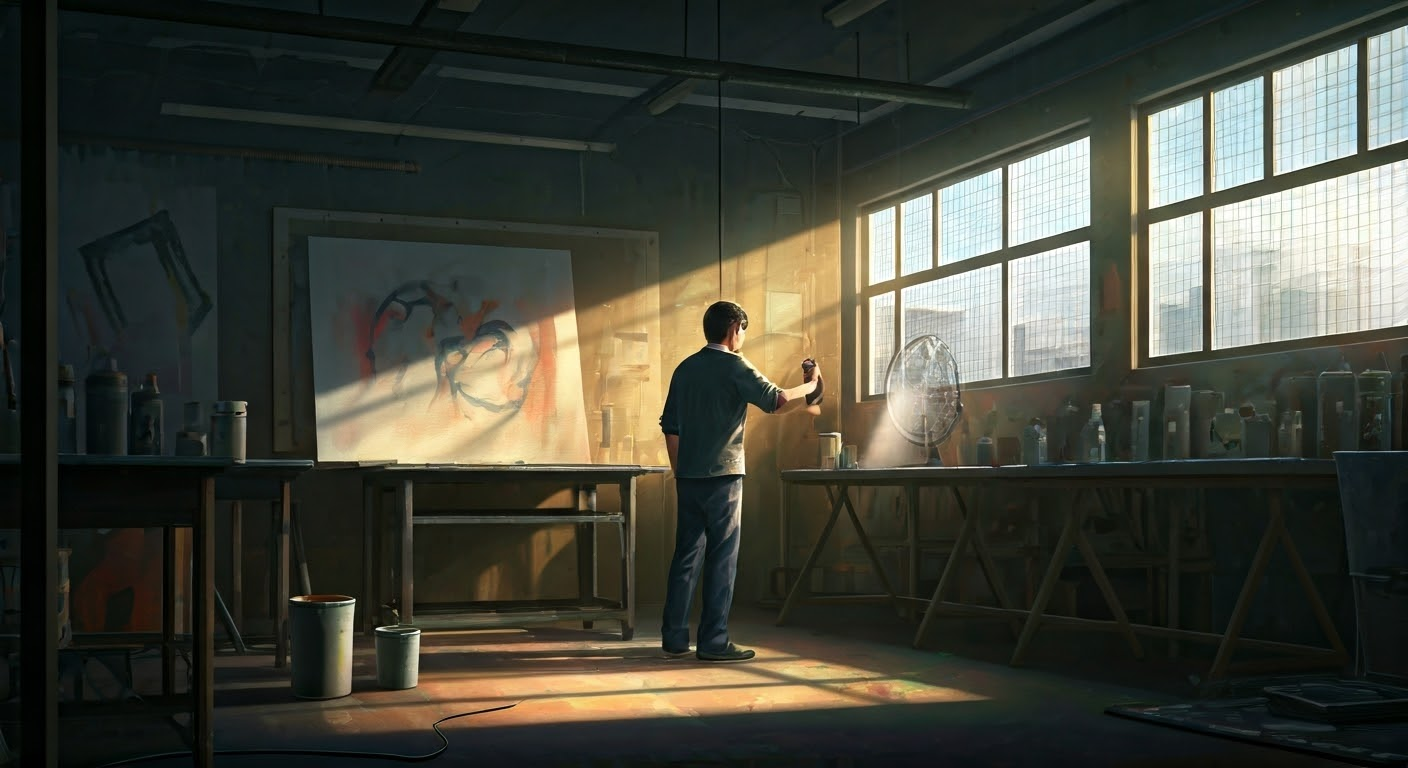Spray paint is a useful tool for DIY projects. It is a fast and simple way to improve surfaces. Knowing how long it takes for spray paint to dry is important.
This helps you get a smooth finish. The drying time can change a lot. This depends on a few things, like the type of paint, the painted surface, and environmental conditions.

Understanding the Drying Mechanism of Spray Paint
The drying process of spray paint happens when the solvents evaporate. Spray paints include solvents that leave behind the color and binder as they dry. How fast these solvents evaporate is important for the drying time. Additives in the paint and the type of paint can also affect how quickly it dries.
The Role of Environmental Conditions in Drying Time
Environmental conditions affect the drying time of spray paint. High humidity can make the drying process slower. This happens because the air has a lot of moisture, which makes it hard for the solvents in the spray paint to evaporate. On the other hand, warm and dry conditions help with fast evaporation. This leads to shorter drying times. Cold weather can also slow down the drying process.
Differences in Drying Times Between Various Spray Paint Types
Different types of spray paint dry at different rates. For instance, lacquer paints dry quickly. They can feel dry to touch in just a few minutes and are fully cured in a few hours. In contrast, enamel spray paint takes longer.
It can take several hours to feel dry and even longer to fully cure. These differences in drying time come from how each type of paint is made.
Factors That Influence Spray Paint Drying Time
The drying time of spray paint doesn’t just depend on the type of paint. Many other things affect how long it takes for the paint to dry fully:
Impact of Surface Material on Drying Time
The type of surface you are painting can change how fast it dries. Porous surfaces, such as wood, soak up some paint. This can make it dry faster.
On the other hand, non-porous surfaces like metal or plastic do not soak up the paint. This leads to slower drying. The texture of the surface is important too. Rough or textured surfaces usually take longer to dry. Smooth surfaces allow for better and more even drying because they are uniform.
The Effect of Humidity and Temperature
Humidity and temperature are key factors that affect drying time. To dry quickly, you need warm temperatures and low humidity.
When humidity is high, the air has a lot of moisture, making it hard for the solvents in the paint to evaporate. On the other hand, low temperatures slow down this evaporation, which makes drying take longer.
The best way to achieve good drying is to keep the environment with warm temperatures and moderate humidity.
Optimizing Spray Paint Drying Time
Getting the best results with spray paint is not only about using the paint. It is important to know how to improve the drying time too.
Techniques to Speed Up Drying
- Use a Blow Dryer: A blow dryer on low heat can help dry things faster. The airflow makes it easier for moisture to leave.
- Control Humidity: If it’s humid, a dehumidifier can help dry your items more quickly. For small projects, just put your painted object near a fan to speed things up.
- Optimize Airflow: Make sure there is good airflow in your workspace. Open windows and doors to let air move freely. This helps moisture evaporate more quickly.
The Importance of Proper Ventilation
Proper ventilation is very important. It helps dry the paint faster and keeps you safe. Most spray paints release fumes that are dangerous if you breathe them in a space with bad airflow.
Working in a place with fresh air helps move these fumes away. This protects your health while you paint. Also, good ventilation helps moisture from the paint evaporate. This prevents problems like uneven drying or defects in the paint.
Frequently Asked Questions
How can I tell if spray paint is completely dry?
To know if spray paint is dry, you can’t just check if the surface feels dry. The drying time can change based on the type of paint, how many coats you put on, and the conditions around it.
It’s generally good to wait a full 24 hours. A simple way to test is to lightly press your fingernail on a hidden spot. If the paint feels hard and doesn’t leave a mark, it’s probably dry. If it’s not dry enough, the paint may not stick well and could smudge or get marked later.
Conclusion
Understanding how long spray paint takes to dry is very important. It affects the outcome of your work. Things like weather and the type of surface you’re painting impact the drying time.
You can help speed up drying by improving ventilation and using the right methods. No matter if you are new or already experienced, learning about spray paint drying will improve your projects.
If you want to improve your painting skills, try these tips. They will surely help you achieve better results and work more efficiently.
